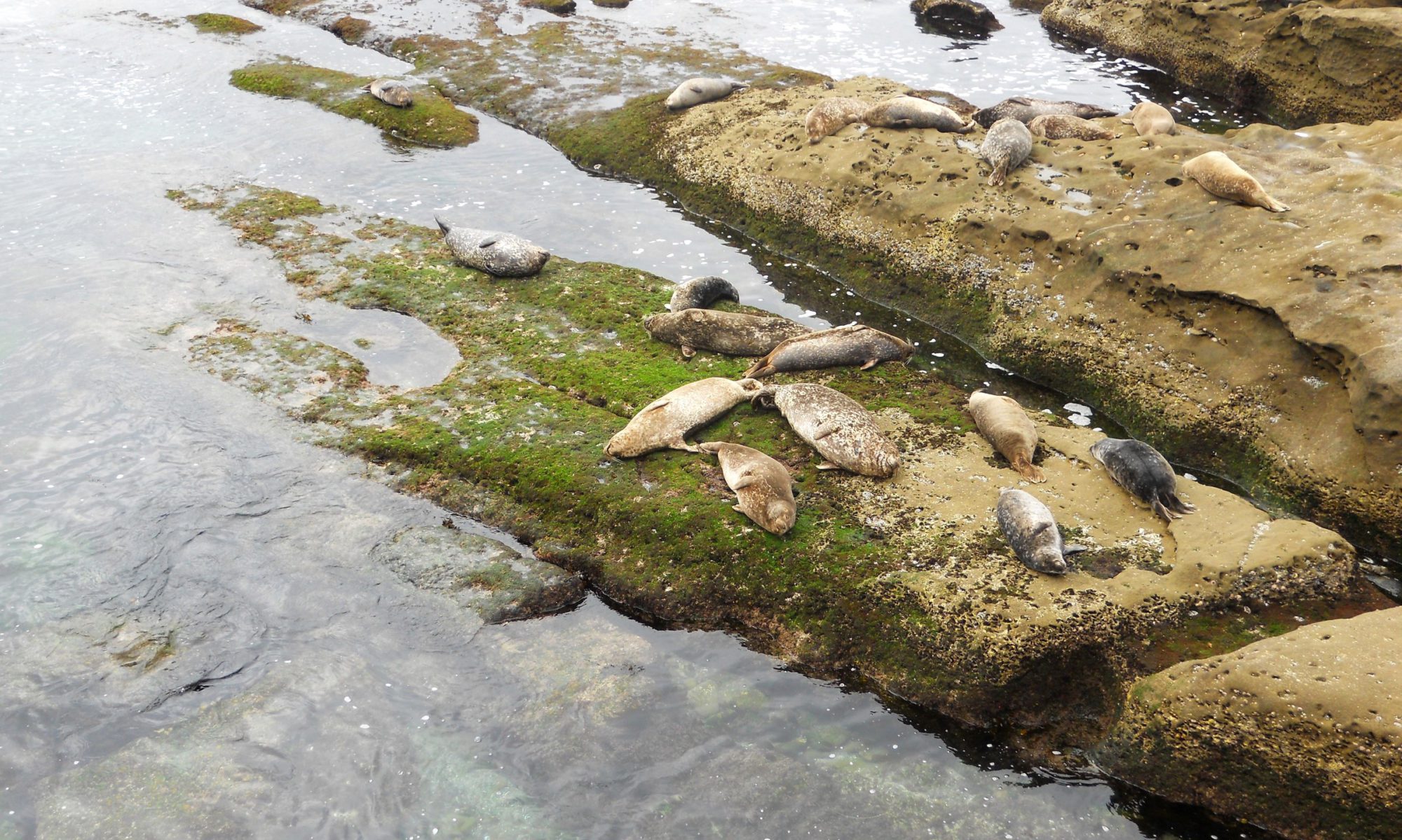There is something extraordinary about seeing wild animals in their natural habitats, especially marine mammals. Well, what if I told you that over at La Jolla, two designated pinniped rookeries near each other? Yes! A Pacific harbor seal rookery is located at Casa Beach/ Children’s Pool, and a California sea lion rookery is found at Point La Jolla and Boomer Beach. Have you ever seen California sea lions up close before?
Both rookeries are close and parallel to Ellen Browning Scripps Park. Today, I will only concentrate on what we saw at the newly closed public- California sea lion rookery.
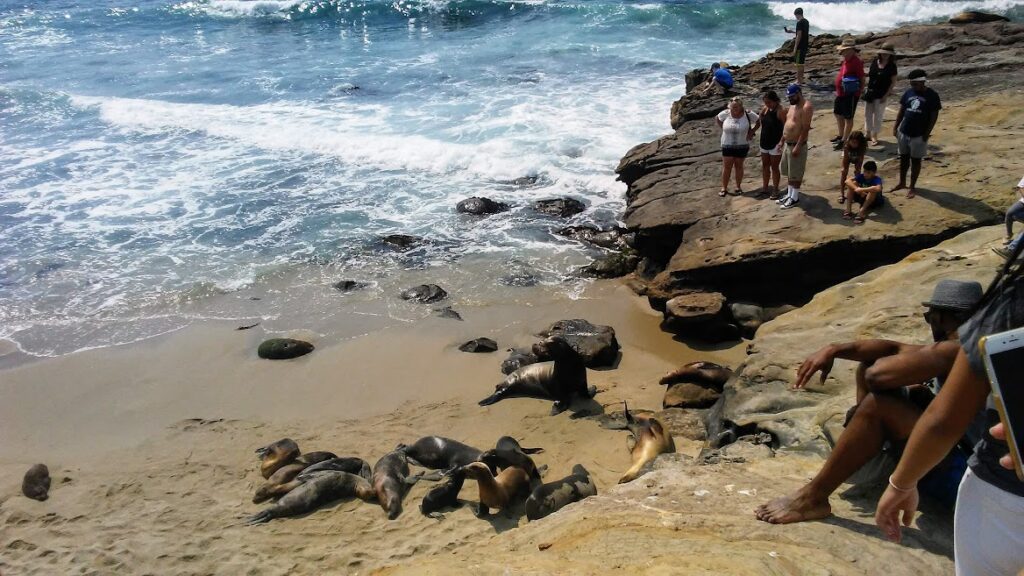
Table of Contents
Where Are The California Sea Lions in La Jolla?
La Jolla Cove
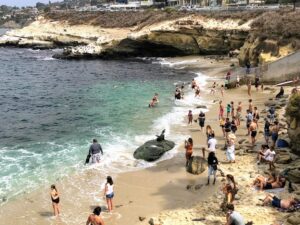
La Jolla cove sits adjacent to Point La Jolla, so it is not uncommon to see a couple of California sea lions hanging out on the rocks in the cove.
On this day, it was unusual for this sea lion to swim onto a crowded beach and pose on a rock, but maybe not.
You would think that some sea lions are becoming less afraid of humans, seeing that human smells and sounds constantly surround them.
Point La Jolla
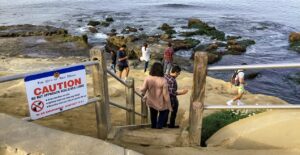
Here are the stairs leading down to Point La Jolla that are to be remained closed until September 15.
Boomer Beach
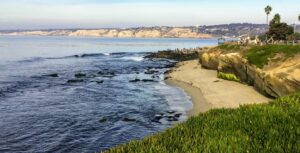
Boomer Beach got its name because the water is pretty rough over here. Since the closure, the sea lions have been enjoying the beach all to themselves.
Seal Rock
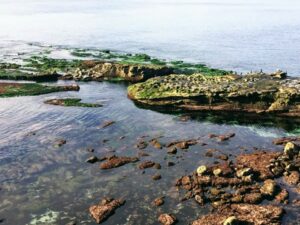
You will find Seal Rock right offshore of Shell Beach, just north of Children’s Pool, where all Pacific harbor seals hang out.
What I find peculiar is that the two species do not interact very much at all, and I think I have only ever seen a California sea lion on the sand at the Children’s Pool once. It appears that the two have set their respective territories and boundaries.
So What’s Going on Over at Point La Jolla?
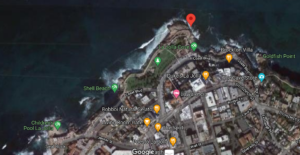
On August 3, the San Diego Parks and Recreation Department (which deals with coastal development permits) issued an emergency permit to close Point La Jolla and Boomer Beach to public access until September 15.
Working with the California Coastal Commission, the city of San Diego decided it would be a good idea to close off this section of the coast to allow the mothers and pups a bit of peace. The dramatic and emergency closure is due to the repeated harassment of several California sea lions.
San Diego city Development Services Department authorized the emergency closure coastal development permit (CDP). Still, in the future, when applying for a new CDP, the public will be allowed more input into future decisions.
Do you live in San Diego, and would you like to make your input into the situation known?
Well, The City of San Diego has a SURVEY for you to fill out.
Point La Jolla California Sea Lion Rookery
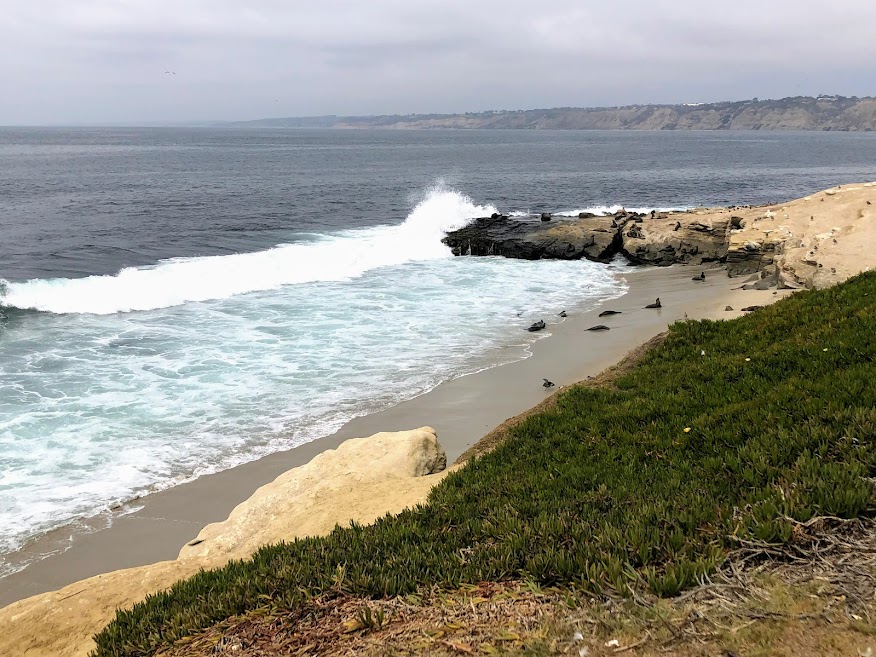
In 2019, the National Oceanic and Atmospheric Administration Fisheries(NOAA) officially designated Point La Jolla as a California sea lion rookery.
A rookery, by definition, is a breeding colony that produces at least 50 pups per season. Nowhere else in Southern California can you see California sea lions and their pups up close.
There is a long history of the public getting way too close to these majestic creatures. Unfortunately, common sense seems to go away once they cross the small wall which separates Point La Jolla and Boomer Beach or walk down the staircase to the rocks.
Many take the warning sign seriously, but most people do not.
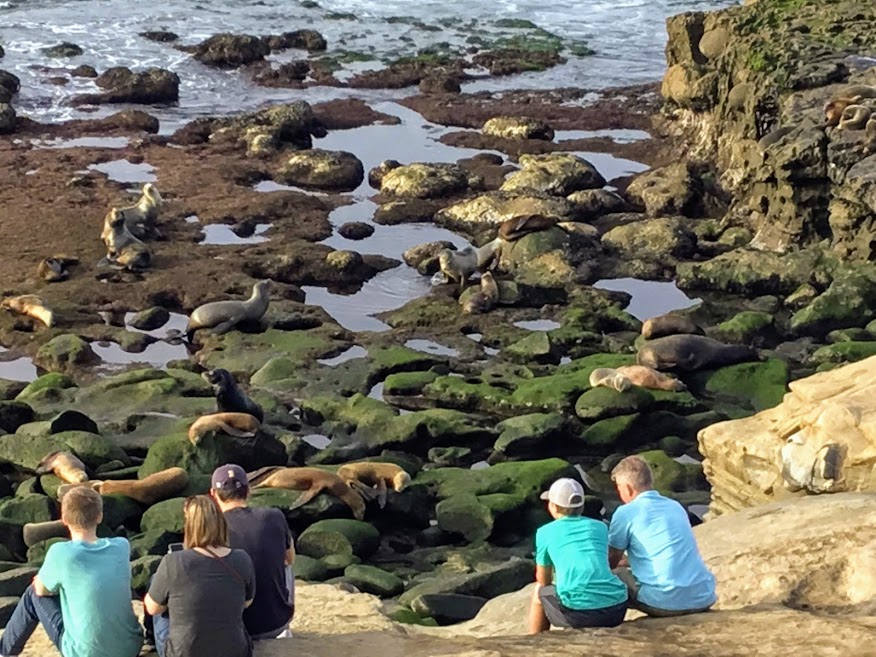
Point La Jolla Trajedy
Members of the Sierra Club Seal Society wrote a letter to San Diego Mayor Todd Gloria asking to close the La Jolla sea lion rookery at the beginning of their pupping season (June), demanding action to be taken after the death of a pup.
On May 26, a group started harassing by poking and prodding a one-year-old sea lion with a stick. The small sea lion was pushed into a rock preventing any escape. Unfortunately, it was found the following day dead with a broken spine.
The photo below shows how close the public gets to the sea lions.
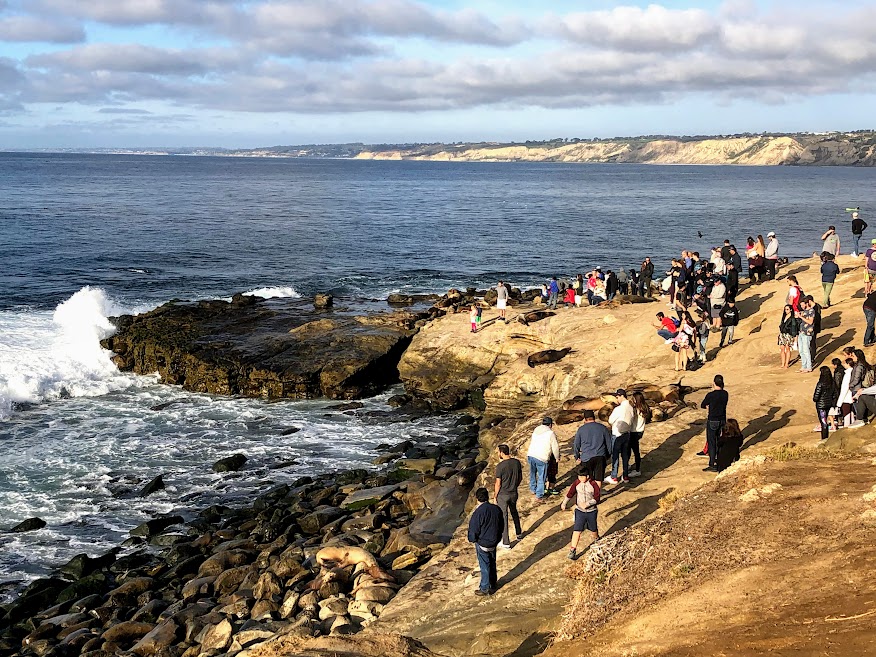
Volunteers of the Sierra Club have a kiosk near the sea lions and have sounded the alarm for years. They do give warnings and try to educate the public.
Still, as some La Jolla residents point out, these volunteers are too far away from the sea lions to deter the curious general public from keeping their distance from the creatures.
There used to be Rangers posted here full-time, but staffing has been a problem due to the pandemic.
So What Happens on September 15?
As the deadline for the closure gets closer, the city is looking into future Point La Jolla closures during the pupping season.
It has been reported that it has been a great success in separating curious onlookers from the rookery.
Interactions have been very low, so future closures look promising.
After September 15, many warning signs will come down, and access to the area will be open again.
In the meantime, there will be marked-up enforcement with additional Rangers to keep an eye on the situation.
The Importance of the Marine Mammal Protection Act
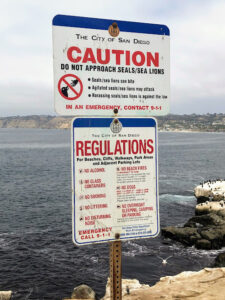
It is imperative to note that all marine mammals are protected by the Marine Mammal Protection Act of 1972.
The Act was amended in 1994 to include ‘harassment as a prohibited activity. “Harassment is any act of pursuit, torment, or annoyance which has the potential to:
- Injure a marine mammal or marine mammal stock in the wild (Level A harassment)
- Disturb a marine mammal or a marine mammal stock in the wild by disrupting behavioral patterns, including but not limited to migration, breathing, nursing, breeding, feeding or sheltering (Level B harassment).”
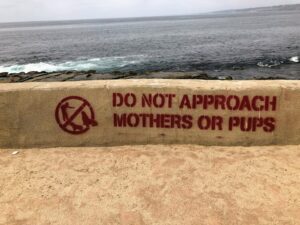
Below, I have provided several reminders for the next time you check out any marine mammal on the coast.
Guidelines for Viewing According to the Marine Mammal Protection Act
- No feeding or attempting to feed because it is harmful and illegal. They have mighty jaws that can do a lot of damage. When you get too close to a wild animal, you stress them out, and it may act unpredictably.
- Stay at least 50 yards or half a football field away- the farther, the better.
- Move away if you see any sign of agitation. Stress may cause the mother to abandon her pup.
- You are too close if they start to stare, fidget, or flee.
- It is illegal to harass in ways that disrupt behavioral patterns, such as resting, breeding, and nursing.
The bottom line is to stay back as far as possible.
California Sea Lions of Point La Jolla- August 17
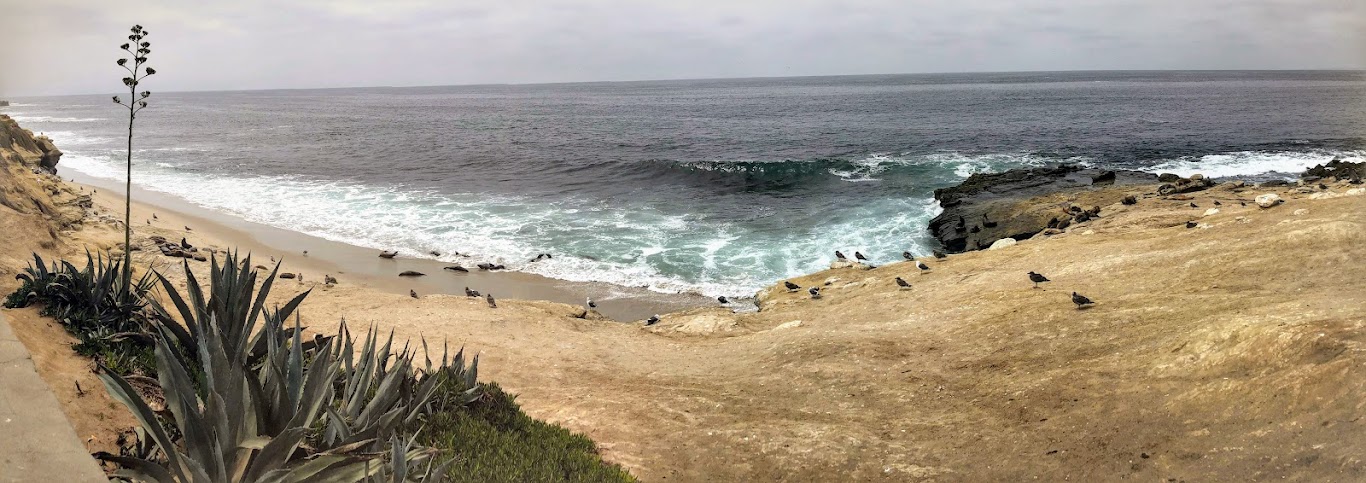
So what did I see?
First of all, the primary thing I noticed when I first arrived was the sea lions on the beach! Usually, they would stay on the rocks, ensuring no one could approach them.
I was thrilled to see them playing in the water on the beach!
The viewing was perfect from the sidewalk up above the beach. I can not tell you enough just how wonderful it was not to see animals next to them.
We are so very fortunate in San Diego to have such a fantastic spot for the California sea lion to utilize among the 46,000 people who live in La Jolla.
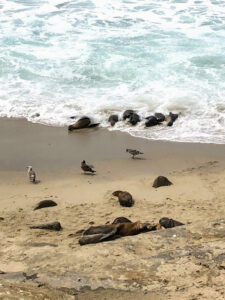
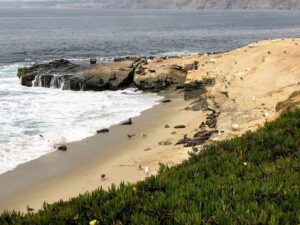
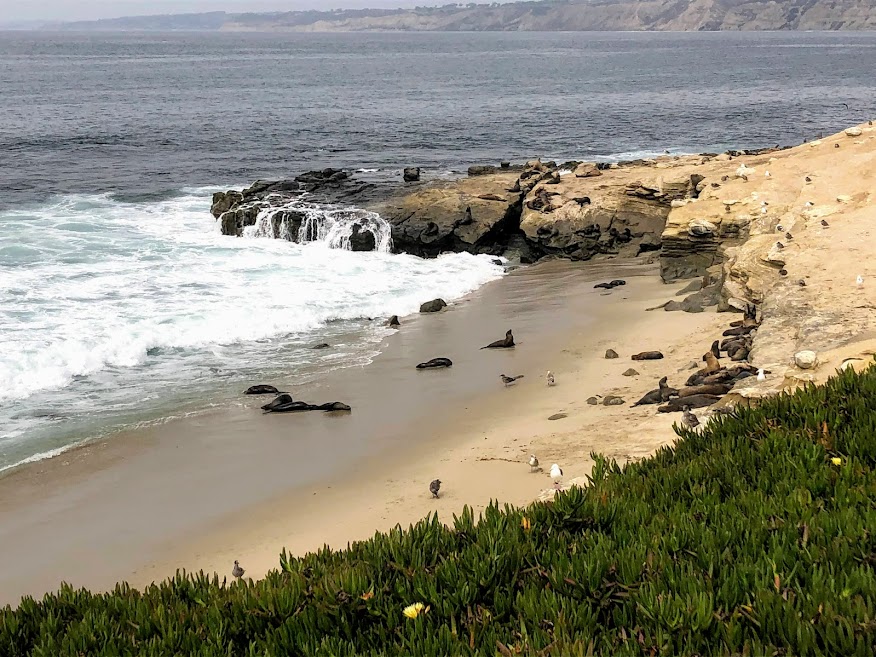
Now, don’t you think this environment looks much healthier without all the people standing around?
Below, I have gone into more detail about a few characteristics of the California sea lion.
Updated Information- November 2022
The seasonal closing dates (May 1- October 31) remain the same, but a new position was brought up: data collection.
The California Coastal Commission voted unanimously at the request of the city of San Diego to keep these closure dates for the next seven years.
Sea Lion Data
So, what type of data will be collected?
- date, time, tide
- weather conditions
- water, air temperatures
- number of marine mammals hauled out on the closed area
- number of marine mammals hauled out in the ocean corridor in front of Boomer Beach
- number of people on the bluff
- number of people on the concrete walkway
- number of people in the ocean corridor in front of Boomer Beach
- any relevant descriptive observations
Data measurement will be taken three times a day- 10 am, 1 pm, and 4 pm.
Harassment data- the number of incidents, citations, and warnings will be recorded at least 16 times a month.
So who is collecting the data?
A park ranger, lifeguard, or city-trained volunteer will collect the data year-round.
The data will finally be analyzed with the results and conclusions available for public consumption as part of the required annual report.
A Few California Sea Lion Facts
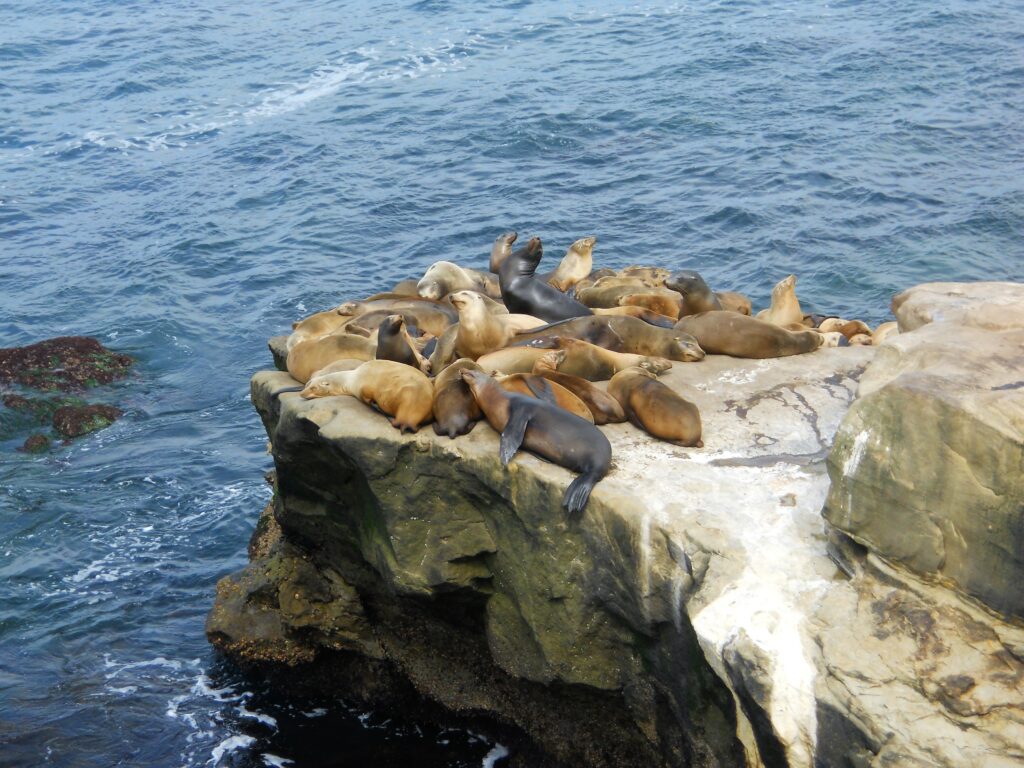
The California sea lion is native to the shallow waters of the West Coast of North America or, in other words, the eastern North Pacific Ocean.
They range from up in Alaska down to the coast of central Mexico. You will see them hauled out on buoys, piers, docks, and jetties along the west coast.
Belonging to the Family Otariidea, or the ‘eared seals,’ they differ from true seals by having external ear flaps and proportionately larger foreflippers and pectoral muscles, which allows for more agile movements on land.
Scientific Name– Zalophus californianus
Weight– Females (240 lbs), Males (700 lbs)
Length– Females (6 ft), Males (7.5ft)
Life Span– 20 to 30 years
Pupping Season– June 1 to October 31
Population- In 2020, the National Oceanic and Atmospheric Administration Fisheries(NOAA) estimated the population on the west coast to be over 300,000.

Appearance
- Adult females and juveniles are blonde to tan in color with a slender body
- Females reach sexual maturity at the age of 3
- nurse their pups for a year
- 200 to 300 pounds
- up to 6 feet in length
- Females reach sexual maturity at the age of 3
- Adult males are larger and are darker in color (dark brown to black)
- 600 to 850 pounds
- up to 7.5 feet in length
- thicker necks, protruding sagittal crest
- Pups are dark brown when born and weigh about 16 pounds. At around 4 or 5 months, the pups molt the darker color and become more blonde or silver.
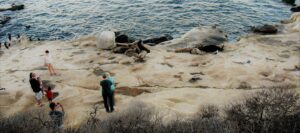
Diet and Behavior
- Feed mainly offshore in coastal areas of a variety of prey, such as; mackerel, rockfish, sardines, squid, and anchovies. They are also a nuisance to anglers’ fishing lines, as they are a reputation for stealing fish.
- They are very social animals, but during breeding, males will aggressively defend their territories, and the females will fight other females to protect their pups.
- California sea lions bark similarly to dogs as a form of communication. Each pup has a unique vocalization and a distinct scent recognized by its mother.
- They are very wary of humans and will run away if they see or smell people.
Breeding Range
- Their primary breeding range starts in the Channel Islands in Southern California, down to central Mexico.
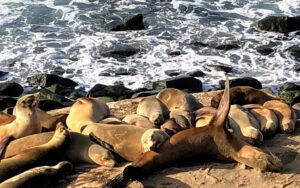
Stocks
- NOAA Fisheries has distinguished three separate stock populations based on where their rookeries are located-
- United States (Canada to US/Mexico border)
- western Baja California
- Gulf California
Lifespan
- Males are polyamorous with up to 14 females and defend their territory vigorously
- Sea lions reach sexual maturity at ages 4 to 5 but mature socially much later
- males start establishing territories at the age of 9 to 12 years
- breeding season begins in late June to early August, with most pups being born from May to June
- Females can mate again three to four weeks after giving birth
- The mama will nurse for 1 to 2 days, abandon the pup to go out to sea to feed for 2 to 3 days, and then return to nurse for several days. The pattern is repeated for up to a year until the pup is weaned.
- pups can not swim until two months
Natural Predators
- Killer whales and great white sharks
Stay Far Away From The Pups!
I took the video above just recently. This behavior would never happen with humans standing around.
As mentioned above, each pup has a distinct scent. If you touched it, the smell could confuse the mother, and she would abandon the pup.
If you approach the lone pup and the mother just so happens to be offshore watching, she might not feel safe returning, thus abandoning the pup.
So I hope you enjoyed the California sea lions of La Jolla!
Down below are a couple of posts that I have done on this spectacular city of La Jolla,
Please have a look!
Until next time!
Helpful Posts for La Jolla
- Let’s Take a La Jolla Coast Walk!
- La Jolla Coast Walk Trail-Let’s Go!
- Showcasing the Best Beaches of La Jolla
- Best San Diego Birding Hotspots
- San Diego Shark Sightings
- Sea Caves at La Jolla Underwater Park
Resources-
- Sierra Club Calls on San Diego Mayor to Close La Jolla Sea-Lion Rookery to Public
- Calls for action after sea lion is reportedly killed on a beach in La Jolla.
- San Diego Moves to Protect Sea Lions at La Jolla Point
- National Oceanic and Atmospheric Administration US Department of Commerce
- NOAA-Laws and Policies: Marine Mammal Protection Act
- The Marine Mammal Center-California Sea Lion
- San Diego to launch permit process for future Point La Jolla closures during sea lion pupping season

I have always had a deep-seated passion for the Ocean Environment which ultimately led me to receive a degree in Marine Biology. Living in the San Diego area for over 30 years, I have extensively explored the 70 miles of San Diego’s coastline, and I am here to share! Please use my website to your advantage and have a look around at all the wonders that the beaches of San Diego can offer you!
